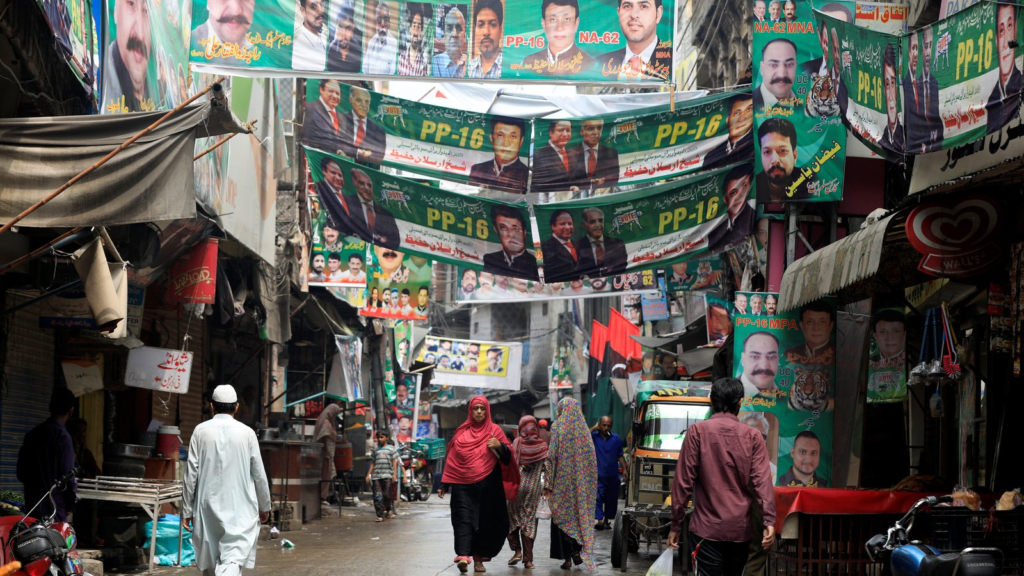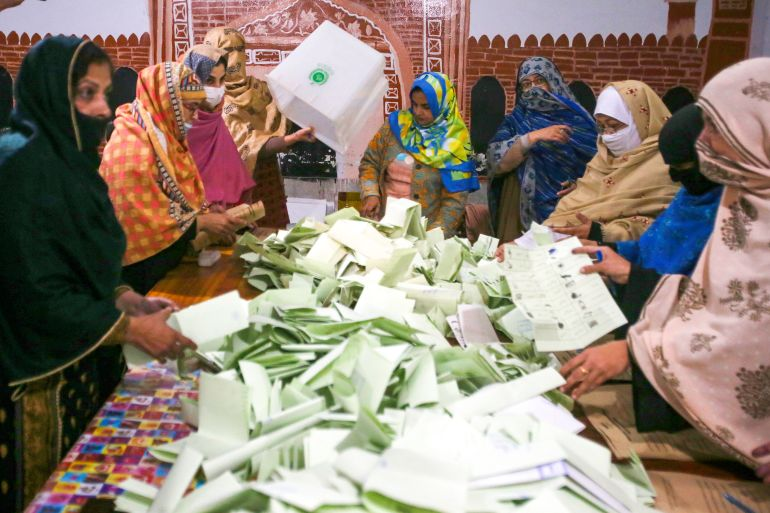The 2018 Pakistani general elections were held on July 25, 2018, to elect members of the 15th National Assembly and the provincial assemblies. These elections marked the second consecutive democratic transition of power in Pakistan’s history, with Pakistan Tehreek-e-Insaf (PTI), led by Imran Khan, emerging as the largest party and forming the federal government.
Here’s a detailed overview of the 2018 elections:
Key Political Parties and Leaders
- Pakistan Tehreek-e-Insaf (PTI): Led by Imran Khan, campaigning on promises of anti-corruption, reform, and a “New Pakistan.”
- Pakistan Muslim League (Nawaz) – PML-N: Led by Shahbaz Sharif (in the absence of Nawaz Sharif, who was disqualified and imprisoned).
- Pakistan Peoples Party (PPP): Led by Bilawal Bhutto Zardari and Asif Ali Zardari, focusing on Sindh and rural areas.
- Muttahida Qaumi Movement (MQM): A major party in urban Sindh, particularly Karachi.
- Jamiat Ulema-e-Islam (F) – JUI-F: Led by Maulana Fazlur Rehman, with influence in Khyber Pakhtunkhwa and Balochistan.
Major Issues in the Election
- Corruption: Imran Khan’s PTI campaigned heavily on an anti-corruption platform, targeting PML-N and PPP.
- Economic Challenges: Rising inflation, unemployment, and debt were key concerns for voters.
- Security: Improved security compared to previous elections, but concerns remained in regions like Balochistan and Khyber Pakhtunkhwa.
- Allegations of Pre-Poll Rigging: PML-N and other parties accused the military establishment of favoring PTI.
Election Results
The results were as follows:
National Assembly Results (Final Seat Distribution):
- PTI: Won 116 seats (largest party but short of a majority).
- PML-N: Won 64 seats.
- PPP: Won 43 seats.
- MMA (Muttahida Majlis-e-Amal): Won 12 seats (a coalition of religious parties).
- MQM: Won 6 seats.
- Others: Smaller parties and independents won the remaining seats.
PTI formed a coalition government with the support of smaller parties and independents.
Key Outcomes
- Imran Khan as Prime Minister: Imran Khan became the 22nd Prime Minister of Pakistan after forming a coalition government.
- PML-N’s Decline: PML-N lost significant ground, particularly in Punjab, its traditional stronghold.
- PPP’s Regional Dominance: PPP retained its dominance in Sindh but struggled to make inroads nationally.
- MMA’s Resurgence: The religious alliance MMA performed well in Khyber Pakhtunkhwa and Balochistan.
Provincial Assembly Results
- Punjab: PTI emerged as the largest party, forming a government with the help of independents and smaller parties.
- Sindh: PPP retained its majority and formed the government.
- Khyber Pakhtunkhwa: PTI won a majority and formed the government.
- Balochistan: A coalition government was formed, with Balochistan Awami Party (BAP) and PTI playing key roles.
Controversies
- Allegations of Rigging: PML-N and other parties accused the military establishment of manipulating the election in favor of PTI.
- Media Restrictions: Reports of media censorship and restrictions on political rallies.
- Disqualification of Nawaz Sharif: Nawaz Sharif’s disqualification and imprisonment were seen as politically motivated by PML-N supporters.
Aftermath
The 2018 elections marked a significant shift in Pakistani politics, with PTI coming to power for the first time. Imran Khan’s government focused on anti-corruption, economic reform, and improving governance. However, the government faced challenges, including economic difficulties, opposition protests, and tensions with the military establishment.
If you need more specific details or analysis, feel free to ask! 😊



